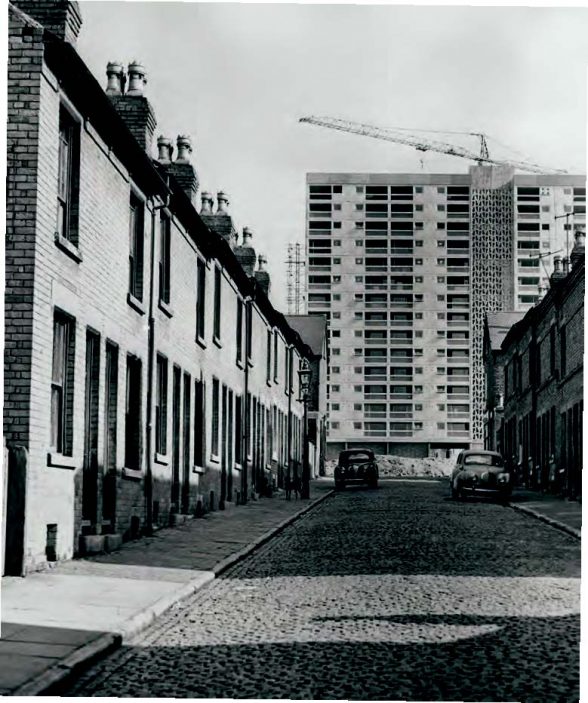This website uses cookies
This website uses cookies to enable it to function properly and to analyse how the website is used. Please click 'Close' to accept and continue using the website.


Homes & Places: a History of Nottingham’s Council Houses
Chris Matthews (Nottingham City Homes, 144pp, £9.99)
Reviewed by Elain Harwood

In these austere times, how many local authorities commission a book about their housing stock? Step forward Nottingham City Homes, the strategic housing service set up within the city council in 2005, which has since built over 500 new homes and upgraded thousands more. A first edition written in 2015 quickly sold out, and this revised edition, coinciding with the centenary of the Addison Act, has been beautifully produced by the chair of C20’s East Midlands group.
But why Nottingham, that quirky city half way between the Midlands and the North? One reason was that its slums were so bad. By 1841, 52,220 people were squeezed on to land that in 1780 had housed only 17,200. Many improvements followed the enclosure of the surrounding fields in 1845, and the first council housing was built in the 1870s. But the slums persisted, and in 1920 central government rejected the city’s attempts to extend its boundaries and build a new town hall because its housing record was so poor.

Conservative and Labour councillors then united under William Crane, the Conservative chairman of the Housing Committee, who gave his name to Nottingham’s distinctive prefab housing in steel and concrete from the 1920s. Most new housing estates were built of brick, and short terraces and crescents of semi-detached housing sprang up on every side of the city, mostly by T Cecil Howitt, housing architect to the council before setting up in private practice. These inter-war estates are easy to take for granted, yet they are the city’s finest housing achievement.
More housing followed after 1945, with a vast estate housing 30,000 people at Clifton and smaller ones at Beachdale and Bilborough that featured in the film Saturday Night and Sunday Morning. The story was one characteristic of provincial cities. Central slums were replaced by tower blocks, mainly to the Bison and Wimpey systems but including a megastructure of 464 flats by Taylor Woodrow on top of the Victoria Shopping Centre. The first city architect, David Jenkin, brought Nottingham into the Yorkshire Development Group which developed its own prefabricated system of heavy panels, designed to give larger housing units than with traditional construction at equivalent cost. But there were leaks between the panels, while social facilities never materialised, and the flagship Balloon Woods Estate built in 1966–72 was demolished in 1984.
Yet only a third of Nottingham’s housing of the 1960s was high-rise, and the dominant inner-city housing today are the St Ann’s and Meadows developments – two huge neighbourhoods entirely rebuilt in the 1970s on Radburn lines. By the late 1970s it was obvious that clearance had gone too far, and the Raleigh Street area was reconditioned rather than rebuilt. Ini the 1980s ‘Right to Buy’ was accompanied by ‘no right to build’. A familiar story, but Matthews tells it well, with a judicious choice of photographs.
We are still populating our book review section. You will be able to search by book name, author or date of publication.

Become a C20 member today and help save our modern design heritage.